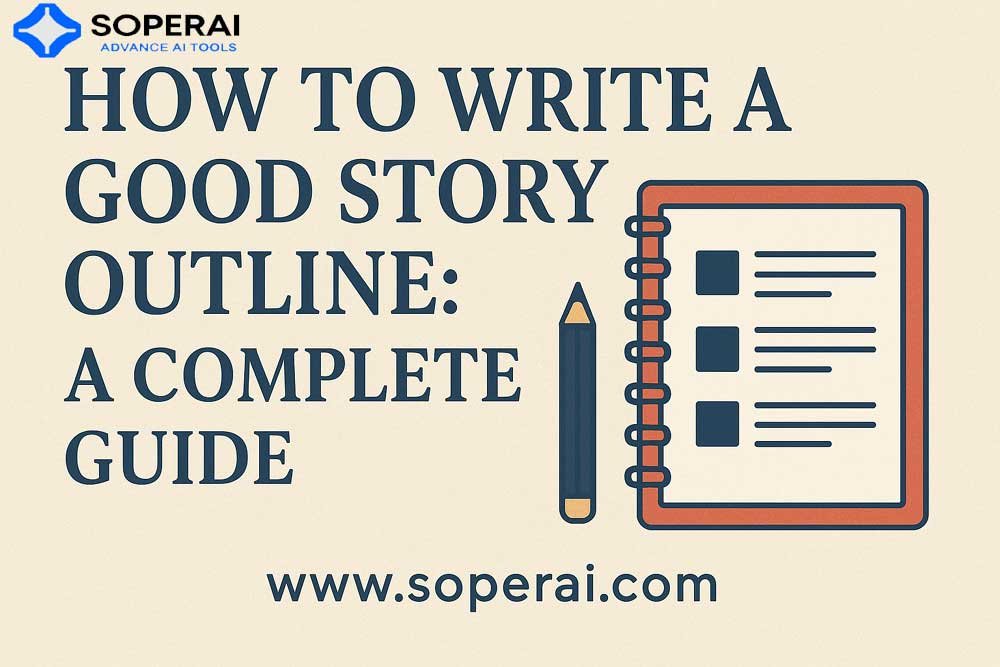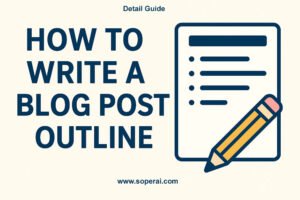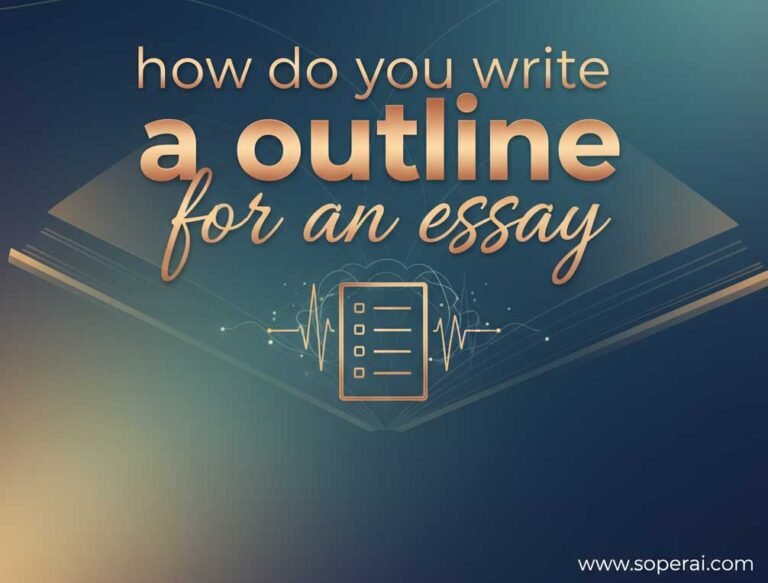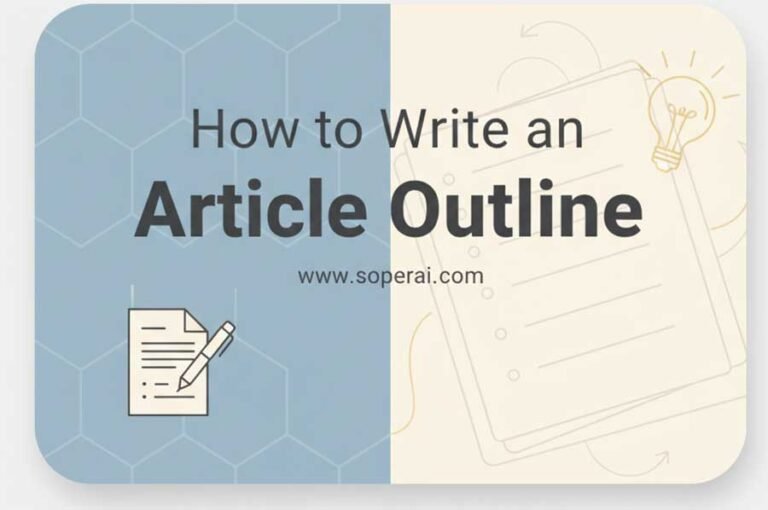Why Story Outlines Matter for Writers of All Levels
Whether you’re a first-time novelist or a seasoned author, story outlining is one of the most powerful tools in your writing arsenal. Many writers mistakenly believe that outlining stifles creativity or that “real” writers simply sit down and let the story flow naturally. However, professional authors across all genres consistently emphasize the importance of having a roadmap before embarking on their writing journey.
A well-crafted outline serves multiple purposes: it prevents you from writing yourself into corners, ensures consistent pacing, maintains character development arcs, and provides a safety net when motivation wanes. Think of your outline as the blueprint for a house—you wouldn’t start construction without knowing where the walls, doors, and windows will go.
The Balance Between Structure and Creative Freedom
One of the biggest misconceptions about outlining is that it constrains creativity. In reality, a good outline provides the framework that actually enhances creative freedom. When you know where your story is headed, you can focus on the artistry of getting there—developing rich dialogue, crafting vivid descriptions, and exploring character psychology without worrying about plot mechanics.
The key is creating an outline that serves as a guide rather than a rigid rulebook. Your outline should be detailed enough to provide direction but flexible enough to accommodate the organic discoveries that emerge during the writing process.
Different Approaches: Plotters vs. Pantsers vs. Plantsers
The writing community often divides into two camps: “plotters” who meticulously plan every detail, and “pantsers” who prefer to “fly by the seat of their pants” with minimal planning. However, most successful writers fall somewhere between these extremes as “plantsers”—writers who combine structured planning with spontaneous discovery.
Plotters typically create detailed outlines, character sheets, world-building documents, and scene-by-scene breakdowns before writing their first draft. This approach works well for complex narratives, mysteries, fantasy epics, and writers who feel anxious without a clear roadmap.
Pantsers prefer to discover their story organically, often starting with just a character, situation, or intriguing “what if” question. This approach can lead to surprising plot developments and authentic character growth but may require extensive revision to address pacing and structural issues.
Plantsers develop a loose outline or general structure but remain open to significant changes as they write. They might outline major plot points and character arcs while leaving room for spontaneous scene development and dialogue discovery.
What This Guide Will Cover
This comprehensive guide will walk you through every aspect of story outlining, from understanding fundamental principles to implementing practical techniques. You’ll learn to identify your story’s essential elements, choose the right structural approach for your project, develop compelling characters within your outline framework, and create a plotting system that enhances rather than restricts your creativity.
We’ll explore various outlining methods, discuss genre-specific considerations, examine common pitfalls to avoid, and provide practical tools and resources to streamline your planning process. By the end of this guide, you’ll have the knowledge and confidence to create outlines that serve your unique writing style and story goals.
Understanding the Purpose of a Story Outline
Clarifying Your Story’s Core Elements Before Writing
Before diving into the actual writing, an outline forces you to identify and articulate your story’s fundamental components. This process involves asking yourself crucial questions: Who is your protagonist, and what do they want? What obstacles stand in their way? What’s at stake if they fail? How will they change by the story’s end?
By answering these questions in your outline, you create a solid foundation that prevents the common problem of a meandering narrative. You’ll know exactly why each scene exists and how it contributes to your story’s overall purpose. This clarity translates into more focused, purposeful writing that keeps readers engaged from beginning to end.
Preventing Plot Holes and Pacing Issues
Plot holes—logical inconsistencies or unexplained elements in your story—often occur when writers haven’t fully thought through their narrative’s cause-and-effect relationships. A thorough outline helps you identify potential problems before you’ve written thousands of words that might need to be discarded.
Similarly, pacing problems frequently stem from inadequate planning. Without an outline, writers might spend too much time on exposition, rush through important character development, or create uneven tension throughout their narrative. An outline allows you to map out your story’s rhythm, ensuring that tension builds appropriately and that major events are properly spaced.
Maintaining Consistency in Character Development
Characters are the heart of any compelling story, but maintaining consistency in their development across a full-length work can be challenging without proper planning. An outline helps you track character arcs, ensuring that personality changes feel organic and earned rather than arbitrary or convenient.
Your outline should include character motivations, goals, and growth trajectories for each major character. This planning prevents situations where characters act inconsistently with their established personalities or where important character development happens off-page or gets forgotten in later chapters.
Saving Time During the Drafting Process
While creating a detailed outline requires upfront time investment, it actually saves significant time during the drafting phase. With a clear roadmap, you’ll spend less time staring at blank pages wondering what happens next. You’ll also reduce the likelihood of major structural revisions that require rewriting large portions of your manuscript.
Many writers find that they can write their first drafts more quickly and confidently when working from an outline. Instead of stopping frequently to figure out plot direction, they can focus on crafting engaging prose and bringing their planned scenes to life.
Creating a Roadmap for Complex Narratives
Complex stories—those with multiple plotlines, large casts of characters, intricate world-building, or non-linear timelines—particularly benefit from detailed outlining. These narratives require careful coordination to ensure that all elements work together harmoniously.
An outline helps you track how different plotlines intersect, when various characters should appear, and how to weave together multiple story elements without confusing readers. For fantasy and science fiction writers, outlines also help maintain consistency in magical systems, technological capabilities, and world-building details.
Essential Elements Every Story Outline Needs
The Central Premise: Your Story’s Core Concept
Every great story begins with a compelling premise—the fundamental “what if” question that drives your narrative. Your premise should be specific enough to provide direction but broad enough to allow for rich exploration. For example, “What if a young wizard discovered he was destined to defeat an evil sorcerer?” is more focused than “What if magic existed?” but still allows for numerous plot possibilities.
Your central premise should be easily summarizable in one or two sentences and should immediately suggest conflict and stakes. It’s the seed from which all other story elements will grow, so spend time refining it until it genuinely excites you and clearly indicates the story’s direction.
Main Character and Character Arc: Protagonist’s Journey and Growth
Your protagonist is your story’s emotional center, and their character arc—the internal journey from who they are at the beginning to who they become at the end—often determines whether your story resonates with readers. Your outline should clearly define your protagonist’s starting point, their core desires and fears, and how they’ll be fundamentally changed by the story’s events.
Consider both external goals (what your character wants to achieve) and internal needs (what they must learn or overcome to grow as a person). The most compelling characters have goals and needs that initially seem to conflict, creating internal tension that drives character development throughout the story.
Core Conflict: Internal and External Obstacles
Conflict is the engine of your story—without it, you have a series of events rather than a compelling narrative. Your outline should identify both external conflicts (obstacles in the physical world) and internal conflicts (psychological or emotional struggles within your characters).
External conflicts might include antagonists, natural disasters, societal pressures, or time constraints. Internal conflicts often involve moral dilemmas, self-doubt, conflicting desires, or the need to overcome personal limitations. The most powerful stories layer multiple types of conflict, creating rich, multifaceted narratives that engage readers on multiple levels.
Setting and World-building: Time, Place, and Atmosphere
Your story’s setting encompasses more than just physical location—it includes time period, social environment, cultural context, and the overall atmosphere that permeates your narrative. Your outline should establish these elements early, as they significantly influence plot possibilities, character behavior, and thematic development.
Consider how your setting affects your story. A romance set in Victorian England will have very different constraints and possibilities than one set in contemporary New York City. Fantasy and science fiction settings require particular attention to world-building consistency, including rules for magic systems, technology levels, and social structures.
Theme: The Underlying Message or Meaning
Theme is what your story is really about beneath its surface plot—the deeper meaning or universal truth that emerges from your character’s journey. While theme shouldn’t be heavy-handed or preachy, having a clear sense of your story’s thematic content helps ensure that all elements work together to create a cohesive, meaningful narrative.
Common themes include the power of love, the corrupting influence of power, the importance of sacrifice, the value of friendship, or the need for personal growth. Your theme should emerge naturally from your plot and character development rather than being artificially imposed on the story.
Tone and Voice: The Story’s Emotional Quality
Tone refers to the overall emotional atmosphere of your story—whether it’s lighthearted or serious, optimistic or dark, suspenseful or contemplative. Voice is the unique way your story is told, including word choice, sentence structure, and narrative perspective.
Your outline should establish these elements early, as they influence every other aspect of your story. A humorous tone might allow for comedic subplot diversions that would feel inappropriate in a serious thriller. Similarly, a first-person narrative voice creates different intimacy and limitation possibilities than third-person omniscient narration.
Popular Outlining Methods and Structures
The Three-Act Structure: Setup, Confrontation, Resolution
The three-act structure is perhaps the most fundamental storytelling framework, used in everything from ancient Greek dramas to modern blockbuster films. This structure divides your story into three distinct sections, each serving a specific purpose in your narrative’s development.
Act I (Setup – approximately 25% of your story): Introduces your protagonist, establishes the story world, and presents the inciting incident that launches your main plot. This section should hook readers, establish stakes, and clearly indicate the story’s direction.
Act II (Confrontation – approximately 50% of your story): Develops the main conflict through rising action, typically including a midpoint that significantly changes the story’s direction. This section tests your protagonist, develops relationships, and builds toward the climax.
Act III (Resolution – approximately 25% of your story): Contains the climax where the main conflict reaches its peak, followed by falling action and resolution that shows how the story’s events have changed your protagonist and their world.
The Hero’s Journey: Joseph Campbell’s Monomyth
Joseph Campbell’s Hero’s Journey, outlined in “The Hero with a Thousand Faces,” identifies common patterns in mythological stories across cultures. This structure works particularly well for adventure stories, fantasy epics, and tales of personal transformation.
The journey typically includes stages such as: the ordinary world, the call to adventure, refusal of the call, meeting the mentor, crossing the threshold, tests and allies, the ordeal, the reward, the road back, and return with the elixir. While not every story needs to include all stages, this framework provides a robust template for character-driven adventures.
The Seven-Point Story Structure: Hook, Plot Turn, Pinch Point, Midpoint
Dan Wells’ Seven-Point Story Structure offers a more detailed framework than the three-act structure while remaining flexible enough for various genres. This method works backward from the ending, helping ensure that every element serves your story’s ultimate resolution.
The seven points are: Hook (opening that grabs attention), Plot Turn 1 (inciting incident), Pinch Point 1 (applies pressure), Midpoint (major revelation or shift), Pinch Point 2 (increases pressure), Plot Turn 2 (final piece falls into place), and Resolution (satisfying conclusion).
Save the Cat Beat Sheet: Blake Snyder’s 15-Beat Structure
Originally developed for screenwriting, Blake Snyder’s Beat Sheet provides a detailed 15-point structure that many novelists have adapted for their work. This method specifies not just what happens but approximately when it should happen based on page count percentages.
Key beats include: opening image, setup, theme stated, catalyst, debate, break into act two, B story, fun and games, midpoint, bad guys close in, all is lost, dark night of the soul, break into act three, finale, and final image. This structure works well for writers who prefer detailed planning and clear milestones.
The Snowflake Method: Starting Small and Expanding Details
Developed by Randy Ingermanson, the Snowflake Method begins with a one-sentence summary and gradually expands detail through ten steps. This approach helps writers develop their stories organically while maintaining overall coherence.
The method includes steps like expanding your one-sentence summary to a paragraph, developing major character summaries, expanding the paragraph to a page, creating character charts, expanding the page summary to a four-page synopsis, and finally creating detailed scene lists and character charts.
Chapter-by-Chapter Outlining: Scene-Level Planning
For writers who prefer maximum detail, chapter-by-chapter outlining involves planning each scene’s purpose, conflict, and outcome before writing. This method works well for complex plots, mysteries, and writers who feel more confident with detailed roadmaps.
Each chapter entry might include: POV character, setting, scene purpose, conflict, character development, plot advancement, and connections to other scenes. While time-consuming, this level of detail can make the actual writing process much smoother.
Developing Your Characters Within the Outline
Creating Character Profiles and Backstories
Compelling characters are the foundation of engaging stories, and your outline process should include detailed character development. Character profiles help you understand your characters’ personalities, motivations, and behavioral patterns before you begin writing their dialogue and actions.
A comprehensive character profile includes basic demographics (age, occupation, physical appearance), personality traits, core beliefs and values, significant past experiences, relationships with other characters, goals and desires, fears and vulnerabilities, speech patterns, and habits or quirks that make them unique.
Backstory—your character’s history before your story begins—provides the foundation for their current behavior and motivations. Focus on backstory elements that directly influence your current plot rather than creating exhaustive histories that never impact the story.
Mapping Character Arcs and Growth Trajectories
Character development should be as carefully plotted as your story’s external events. Map out how each major character will change throughout your narrative, ensuring that these changes feel earned and organic rather than arbitrary or convenient.
Consider your character’s emotional journey alongside the plot events. What internal obstacles must they overcome? What beliefs or assumptions will be challenged? How will they be different at the story’s end? Character growth often involves characters learning to overcome their fundamental flaws or fears.
Establishing Relationships and Dynamics
Characters don’t exist in isolation—their relationships with other characters often drive both plot and character development. Your outline should map out key relationships and how they’ll evolve throughout the story.
Consider how different characters bring out different aspects of your protagonist’s personality. A character might be confident with friends but nervous around authority figures, or compassionate with strangers but harsh with family members. These relationship dynamics create opportunities for character revelation and development.
Planning Character Motivations and Goals
Every significant character should have clear motivations—the underlying reasons for their actions—and specific goals they’re trying to achieve. These motivations and goals create the driving force behind character actions and dialogue.
Distinguish between surface-level wants (what characters think they need) and deeper needs (what they actually require for growth and happiness). The tension between wants and needs often creates compelling internal conflict and character development opportunities.
Ensuring Each Character Serves the Story
In your outline, evaluate whether each character contributes meaningfully to your story. Every significant character should serve specific functions: advancing the plot, revealing aspects of other characters, representing thematic ideas, or providing necessary conflict or support.
Consider combining minor characters who serve similar functions, or deepen characters who seem to exist solely for plot convenience. Each character should feel like a real person with their own agenda rather than a tool that exists solely to serve your protagonist’s journey.
Plotting Your Story’s Structure
Identifying Your Inciting Incident
The inciting incident is the event that disrupts your protagonist’s normal world and launches your main story. This moment should occur relatively early in your narrative and should clearly establish the central conflict that will drive your entire plot.
Your inciting incident should be specific, significant, and directly connected to your protagonist’s goals and growth. It’s not enough for something interesting to happen—the incident must force your character to take action and begin their journey toward change.
Building Rising Action and Escalating Tension
Rising action encompasses all the events between your inciting incident and climax, and it should steadily increase tension and stakes while developing character relationships and advancing your plot. Each scene should either escalate the conflict or develop character relationships in ways that will matter for future conflicts.
Plan complications and obstacles that force your protagonist to grow and adapt. These challenges should become progressively more difficult, testing your character in new ways and revealing different aspects of their personality.
Crafting a Compelling Climax
Your climax is the moment of highest tension where your story’s central conflict reaches its peak. This scene should feel like the inevitable result of everything that came before while still providing surprises or revelations that feel both unexpected and perfectly logical.
The climax should test everything your protagonist has learned during their journey and require them to demonstrate their character growth. It’s not enough for external events to resolve the plot—your character must actively contribute to the resolution through their choices and actions.
Planning Your Resolution and Denouement
The resolution shows how your story’s conflicts are resolved and demonstrates the ways your protagonist has been changed by their journey. This section should feel satisfying and complete while avoiding the temptation to over-explain or continue the story beyond its natural ending point.
Address both the external plot resolution and the internal character resolution. How has your character grown? What have they learned? How is their world different now? The resolution should feel earned and proportional to the journey you’ve put your character through.
Balancing Pacing Throughout the Narrative
Pacing refers to the rhythm of your story—the balance between action and reflection, tension and release, dialogue and description. Your outline should consider pacing throughout the entire narrative, ensuring that your story maintains reader engagement without becoming exhausting or monotonous.
Vary your scene types and intensities. Follow high-tension scenes with moments of character reflection or relationship development. Alternate between action sequences and quieter character moments to give readers time to process events and connect with your characters.
Creating Effective Scene Transitions
Plan how you’ll move between scenes and chapters to maintain story flow and reader engagement. Effective transitions maintain momentum while clearly indicating changes in time, location, or point of view.
Consider ending chapters with hooks that make readers want to continue, while beginning new chapters or sections with enough context to orient readers without being repetitive. Your outline should note significant transitions and how you’ll handle them smoothly.
Building Compelling Conflict and Tension
Types of Conflict: Person vs. Person, Nature, Society, Self
Compelling stories typically layer multiple types of conflict to create rich, engaging narratives. Understanding different conflict types helps you plan a story that engages readers on multiple levels and provides various sources of tension throughout your narrative.
Person vs. Person: Direct conflict between characters, including protagonists vs. antagonists, friends who disagree, or family members with opposing goals. These conflicts create immediate dramatic tension and often drive external plot action.
Person vs. Nature: Conflicts with natural forces, weather, animals, or survival situations. These conflicts test characters’ resourcefulness and determination while often serving as metaphors for internal struggles.
Person vs. Society: Conflicts with social institutions, cultural expectations, legal systems, or prevailing attitudes. These conflicts allow exploration of social themes and often require characters to choose between conformity and personal integrity.
Person vs. Self: Internal conflicts involving moral dilemmas, self-doubt, conflicting desires, or the need to overcome personal limitations. These conflicts drive character development and often provide the emotional core of compelling stories.
Layering Multiple Conflicts Throughout Your Story
The most engaging stories weave together multiple conflicts that intersect and influence each other. Your outline should plan how different conflicts will emerge, develop, and resolve throughout your narrative.
Consider how external conflicts can mirror or complicate internal ones. A character facing a dangerous external threat might simultaneously struggle with self-doubt, creating layers of tension that engage readers both intellectually and emotionally.
Creating Stakes That Matter to Readers
Stakes—what your character stands to gain or lose—give readers reasons to care about your story’s outcome. Effective stakes are personal, significant, and clearly understood by readers.
The best stakes combine external consequences (physical danger, loss of relationships, failure to achieve goals) with internal consequences (loss of self-respect, failure to grow, betrayal of personal values). Make sure readers understand not just what might happen, but why it matters to your character and why they should care.
Planning Plot Twists and Reveals
Well-executed plot twists surprise readers while feeling inevitable in retrospect. Your outline should plant the seeds for major revelations early in the story while maintaining the surprise factor.
Effective twists should recontextualize earlier events rather than contradicting them. Readers should be able to look back and see clues they missed, not feel that you’ve cheated or withheld crucial information unfairly.
Maintaining Tension Between Major Events
Tension shouldn’t exist only during major dramatic scenes—your outline should plan how to maintain reader engagement during transitional moments and character development scenes.
Use techniques like unresolved questions, character conflicts, time pressure, or looming threats to maintain underlying tension even during quieter moments. Your characters should rarely feel completely safe or satisfied, even during relatively peaceful scenes.
World-building and Setting in Your Outline
Establishing Time Period and Location
Your story’s setting significantly influences plot possibilities, character behavior, and reader expectations. Your outline should clearly establish when and where your story takes place, considering how these choices impact every aspect of your narrative.
Time period affects available technology, social attitudes, historical events, and cultural norms that will influence your characters’ actions and choices. Location determines climate, geography, local culture, and available resources that can serve as both opportunities and obstacles for your characters.
Creating Consistent Rules for Your Story World
Every story world operates according to certain rules, whether they mirror reality or include fantastical elements. Your outline should establish these rules early and apply them consistently throughout your narrative.
Consider physical laws, social structures, economic systems, political organizations, and cultural norms that govern your story world. For fantasy and science fiction, establish clear rules for magical systems, technological capabilities, and any other speculative elements.
Planning How Setting Affects Plot and Character
Setting should be more than decorative backdrop—it should actively influence your story’s development. Plan how location, time period, and cultural context will create opportunities and obstacles for your characters.
Consider how different settings might bring out different aspects of your characters’ personalities. A character might behave differently in their hometown versus a foreign country, in a crowded city versus isolated wilderness, or in a formal business setting versus a casual social gathering.
Incorporating Research into Your Outline
Whether you’re writing historical fiction, contemporary realism, or speculative fiction, research can enrich your story world and provide authentic details that enhance reader immersion.
Plan your research needs during the outlining phase to avoid interrupting your writing flow later. Identify what you need to know about time periods, locations, professions, technologies, or other specialized knowledge areas that will appear in your story.
Balancing Description with Action
Your outline should plan how you’ll present setting information without overwhelming readers or slowing your story’s pace. Integrate world-building details into action and dialogue rather than relying on lengthy descriptive passages.
Consider which setting details are essential for plot understanding, which add atmospheric richness, and which might be unnecessary clutter. Focus on details that serve multiple purposes—advancing plot, developing character, or reinforcing theme.
Practical Steps to Create detailed documentation of your magic systems, technological capabilities, social structures, and physical laws.
Plan how these elements will create opportunities and obstacles for your characters while serving your story’s themes.
Consider the learning curve for readers encountering your fictional world. Plan how you’ll introduce complex concepts gradually without overwhelming readers or resorting to lengthy exposition dumps. Integrate world-building naturally into action and dialogue.
Literary Fiction: Character-driven vs. Plot-driven Outlines
Literary fiction often prioritizes character development, thematic exploration, and artistic prose over high-concept plotting. However, this doesn’t mean literary works don’t benefit from outlining—they simply require different approaches.
Focus your outline on character psychology, relationships, and internal conflicts rather than external action sequences. Plan how your characters’ inner lives will drive plot developments and how external events will illuminate character psychology and thematic content.
Consider literary fiction’s emphasis on subtlety and nuance. Your outline might include emotional beats, symbolic elements, and thematic developments alongside traditional plot points. Plan how you’ll convey meaning through implication and subtext rather than explicit statement.
Historical Fiction: Incorporating Research and Accuracy
Historical fiction requires balancing factual accuracy with compelling storytelling. Your outline should integrate historical research with fictional narrative elements while respecting both historical truth and story needs.
Plan your research needs during the outlining phase to identify what you need to know about your chosen time period. Consider social customs, daily life details, political events, technological limitations, and cultural attitudes that will influence your characters and plot.
Decide how closely you’ll adhere to historical facts versus taking creative liberties for story purposes. Some historical fiction stays very close to documented events while other works use historical settings as backdrops for entirely fictional narratives.
Tools and Resources for Outlining
Digital Tools: Scrivener, Plottr, World Anvil
Modern technology offers numerous tools designed specifically for story planning and organization. These digital solutions can streamline your outlining process while providing features that traditional methods can’t match.
Scrivener is perhaps the most popular writing software among serious writers. It offers robust organizational features including folder structures, character and setting sheets, research storage, and multiple viewing options. Scrivener’s corkboard feature allows you to arrange scenes visually, while its outlining tools help track plot threads and character arcs.
Plotter specializes specifically in story plotting and timeline management. It provides visual story mapping, character arc tracking, and timeline views that help you see how different story elements interact across your narrative. Plottr works particularly well for complex stories with multiple plotlines and large character casts.
World Anvil caters specifically to fantasy and science fiction writers who need extensive world-building tools. It provides templates for creating detailed fictional worlds including maps, timelines, cultures, religions, and political systems. The platform also offers manuscript writing tools integrated with your world-building materials.
Traditional Methods: Index Cards, Notebooks, Whiteboards
Despite digital advances, many writers still prefer traditional, physical outlining methods that offer tactile engagement and visual flexibility without technological distractions.
Index Cards provide flexibility for arranging and rearranging scenes, plot points, or character information. You can spread cards across a large surface to visualize your story’s structure, group related elements by color-coding, and easily move elements around as your story evolves.
Notebooks offer portability and freedom from technological constraints. Many writers prefer handwriting for initial brainstorming and outline development, finding that the physical act of writing stimulates creativity differently than typing.
Whiteboards provide large visual spaces for mapping complex stories, tracking multiple plotlines, or brainstorming connections between story elements. They’re particularly useful for group planning sessions or when you need to see your entire story structure at once.
Free Resources and Templates
Numerous free resources can help streamline your outlining process without requiring expensive software purchases.
Online templates for various outlining methods (Three-Act Structure, Hero’s Journey, Beat Sheets) provide starting frameworks that you can customize for your specific story. Many writing websites offer downloadable character sheets, plotting templates, and world-building guides.
Free software options like yWriter, Manuskript, or even Google Docs with custom templates can provide digital organization without cost barriers. These tools might lack some advanced features of premium software but offer sufficient functionality for most outlining needs.
Apps for Mobile Outlining
Mobile apps allow you to work on your outline anywhere, capturing ideas and making updates during commutes, breaks, or whenever inspiration strikes.
Writing apps like Ulysses, Bear, or simple note-taking apps can store and organize outline information across devices. Cloud synchronization ensures your outline stays updated regardless of which device you use for accessing it.
Some apps specialize in story development, offering character tracking, plot organization, and timeline management specifically designed for mobile use. These tools work well for writers who prefer working on tablets or phones or who want to utilize small pockets of time for story planning.
Collaborative Tools for Co-Authors
Co-writing projects require tools that allow multiple people to access and modify shared outlines while tracking changes and maintaining version control.
Google Docs provides real-time collaboration with comment and suggestion features that allow co-authors to discuss changes without modifying the main document. Its revision history lets you track changes and revert to previous versions if needed.
Specialized collaborative writing platforms like Campfire Write or World Anvil offer features designed specifically for shared story development, including permission controls, change tracking, and integrated communication tools.
From Outline to First Draft
Using Your Outline as a Writing Guide
Transitioning from planning to actual writing represents a significant shift in mindset and process. Your outline should serve as a helpful guide rather than a restrictive rulebook during this transition.
Approach each writing session by reviewing your outline to understand the day’s goals and the scenes you plan to write. However, remain flexible enough to deviate when better ideas emerge naturally during the writing process.
Use your outline to maintain momentum when you feel stuck or uncertain about what happens next. Having a roadmap prevents the blank page paralysis that often derails writing projects and helps you maintain consistent progress toward your story’s completion.
Maintaining Momentum During Drafting
First drafts are about getting your story down on paper rather than achieving perfection. Your outline helps maintain forward momentum by providing clear direction and preventing the indecision that can stall progress.
When you encounter scenes that aren’t working as planned, resist the urge to stop and revise extensively. Instead, make notes about needed changes and continue moving forward. Your outline helps ensure that you’ll reach your story’s conclusion even if individual scenes require later revision.
Set realistic daily writing goals that align with your outline’s scope and your available time. Consistent progress, even in small increments, leads to completed manuscripts more reliably than sporadic bursts of intensive writing.
Dealing with Writer’s Block When You Have an Outline
Even well-outlined stories can encounter writer’s block, but having a roadmap provides several strategies for overcoming creative obstacles.
If you’re stuck on a particular scene, review your outline to understand the scene’s purpose and required outcomes. Sometimes block occurs because a planned scene isn’t actually necessary or because you’re approaching it from the wrong angle.
Consider skipping problematic scenes temporarily and writing later scenes that feel more accessible. Your outline allows you to write scenes out of order while maintaining narrative coherence, letting you maintain momentum even when specific sections prove challenging.
Knowing When to Stick to the Plan vs. When to Improvise
Successful first draft writing requires balancing adherence to your outline with openness to organic discoveries that emerge during the creative process.
Stick to your plan when deviations would require extensive outline restructuring, when you’re simply avoiding difficult but necessary scenes, or when proposed changes don’t genuinely improve your story’s overall effectiveness.
Improvise freely when you discover better character motivations, more compelling plot developments, or stronger thematic connections. Trust your creative instincts when they suggest improvements over your original conception.
Transitioning from Planning to Writing Mindset
Moving from analytical outlining to creative writing requires a mental shift from logical organization to intuitive storytelling. Both mindsets are necessary, but they serve different functions in the creative process.
During outlining, you think strategically about overall story structure, character arcs, and thematic development. During writing, you focus on immediate scene needs: vivid descriptions, authentic dialogue, emotional authenticity, and moment-to-moment narrative flow.
Allow yourself time to transition between these mindsets. Some writers benefit from brief meditation or warm-up exercises before writing sessions, while others prefer to review their outline and then set it aside to write more intuitively.
Conclusion
Recap of Key Outlining Principles
Effective story outlining balances structure with creativity, providing enough guidance to prevent major problems while preserving space for organic discovery. The most successful outlines clarify your story’s core elements—protagonist, conflict, stakes, and resolution—while remaining flexible enough to accommodate better ideas that emerge during writing.
Remember that outlining is a tool to serve your story, not a rigid system that must be followed regardless of consequences. Different writers require different levels of detail, and different stories benefit from different structural approaches. The key is finding the outlining method that enhances rather than restricts your particular creative process.
Encouragement for Writers to Find Their Own Process
Every successful writer has developed their own unique approach to story planning and development. What works brilliantly for one writer might feel constraining or insufficient for another. Use this guide as a starting point for discovering your personal outlining style rather than as a prescription that must be followed exactly.
Experiment with different methods, tools, and levels of detail until you find approaches that excite and energize your writing process. Your outlining style may evolve as you gain experience, tackle different types of stories, or discover new tools and techniques.
The Iterative Nature of Storytelling
Storytelling is an iterative process where each stage—outlining, drafting, revising—informs and improves the others. Your first outline won’t be perfect, and that’s entirely normal and expected. Each story you plan and write teaches you more about your personal creative process and improves your ability to structure compelling narratives.
View outlining as an ongoing conversation with your story rather than a one-time planning session. Your outline will evolve as you write, and your writing will reveal new possibilities that enhance your outline. This back-and-forth process is natural and productive rather than a sign of inadequate initial planning.
Final Tips for Outline Success
Start Simple: Begin with basic story elements and add complexity gradually rather than trying to plan everything perfectly from the beginning.
Stay Flexible: Treat your outline as a living document that can and should evolve as your story develops.
Focus on Function: Ensure every outline element serves a specific purpose in your story rather than including information simply because it might be useful.
Trust Your Instincts: When your creative intuition suggests changes to your planned outline, seriously consider whether these changes improve your story.
Practice Regularly: Outlining skills improve with experience, so practice with short stories and writing exercises as well as major projects.
Moving Forward with Confidence
Armed with understanding of outlining principles, methods, and tools, you’re prepared to approach your next story with confidence and clarity. Remember that the goal isn’t to create perfect outlines but to develop planning skills that support your unique creative process.
Your outline is the foundation for your story, but it’s not the story itself. The real magic happens when you begin writing, bringing your carefully planned elements to life through vivid prose, authentic dialogue, and emotional truth. Use your outline as the launching pad for creative exploration rather than a limitation on imaginative possibilities.
Whether you’re tackling your first novel or your tenth, whether you prefer detailed scene-by-scene planning or loose structural guidelines, the principles in this guide will help you create stories that engage readers from beginning to end. Trust in your preparation, embrace the creative process, and remember that every great story begins with a writer brave enough to start planning their next adventure.
Bonus Section: Quick Start Outlining Templates
Act I (25% of story):
Act II (50% of story):
Act III (25% of story):
Template 2: Character Arc Tracker
Starting Point:
Character Growth Milestones:
Supporting Evidence:
Template 3: Scene Planning Worksheet
Scene Basics:
Conflict & Tension:
Plot Function:
Character Development:
Scene Outcome:
Template 4: World-Building Checklist
Physical World:
Social Structure:
Daily Life:
Conflict Sources:
Additional Resources and Further Reading
Essential Books on Story Structure and Outlining
“Save the Cat! Writes a Novel” by Jessica Brody An adaptation of Blake Snyder’s famous screenwriting structure for novelists, providing a detailed 15-beat framework with examples from popular novels.
“The Writer’s Journey” by Christopher Vogler Based on Joseph Campbell’s work, this book explores the Hero’s Journey structure and its applications to modern storytelling across all genres.
“Into the Woods” by John Yorke A comprehensive examination of story structure from a British perspective, exploring five-act structure and the universal patterns found in compelling narratives.
“The Anatomy of Story” by John Truby Focuses on character-driven plot development and provides tools for creating complex, layered narratives that serve both plot and character development.
“Plot & Structure” by James Scott Bell A practical guide covering various structural approaches with specific techniques for plotting novels in different genres.
Online Communities and Resources
Writing Forums:
- Absolute Write Water Cooler – Active community with dedicated plotting and outlining discussions
- NaNoWriMo Forums – Particularly active during November, with year-round planning resources
- Reddit’s r/writing and r/PubTips – Regular discussions on craft topics including outlining
Educational Websites:
- Writer’s Digest – Regular articles on plotting techniques and structural approaches
- The Creative Penn – Podcast and blog covering all aspects of the writing business and craft
- Helping Writers Become Authors – Detailed articles on story structure and character development
YouTube Channels:
- Abbie Emmons – Focus on character-driven plotting and story structure
- Jenna Moreci – Practical advice on all aspects of novel writing including outlining
- Brandon Sanderson’s Writing Lectures – University-level instruction on fantasy writing and world-building
Software and Tools Comparison
For Detailed Planners:
- Scrivener: Best overall features for complex projects ($49)
- Plottr: Visual plotting specialist ($25/month)
- Campfire Write: Strong world-building tools ($4.92/month)
For Budget-Conscious Writers:
- yWriter: Free with robust organizational features
- Manuskript: Open-source alternative to Scrivener
- Google Docs: Free with collaboration features
For Mobile Writers:
- Ulysses: Premium mobile writing experience ($39.99/year)
- Notion: Flexible database system for complex story tracking (Free tier available)
- Milanote: Visual organization tool ($12.50/month)
Frequently Asked Questions
Q: How detailed should my outline be?
A: The ideal level of detail depends on your writing style and story complexity. Start with major plot points and character arcs, then add detail where you feel uncertain. You should have enough information to prevent major plot holes while leaving room for creative discovery during writing.
Q: What if I’m a “pantser” who hates detailed planning?
A: Try minimal outlining approaches like the Three-Act Structure or simple character goal tracking. Even knowing your story’s beginning, middle, and end provides valuable guidance. Start small and gradually increase detail only where you feel it’s helpful.
Q: Should I outline the entire series or just the first book?
A: For series, create a detailed outline for your first book and a general overview for the entire series. Plan major series arcs, character development across books, and how each book will end, but avoid over-planning future books since your writing process will likely suggest changes.
Q: How do I handle multiple POV characters in my outline?
A: Create separate character arc sections for each POV character, then plan how their storylines intersect and influence each other. Use color coding or separate documents to track each character’s journey, ensuring each has a complete arc and serves the overall story.
Q: What if my story changes dramatically from my original outline?
A: This is completely normal and often indicates your story is evolving in positive directions. Update your outline to reflect major changes and ensure the new direction maintains story coherence. Don’t abandon outlining entirely—adapt it to serve your story’s new needs.
Q: How long should the outlining process take?
A: This varies greatly by writer and project complexity. Some writers outline in a few days, others take weeks or months. Focus on having a solid foundation rather than rushing to begin writing. Time spent on a good outline typically saves time during drafting and revision.
Q: Can I use different outlining methods for different parts of my story?
A: Absolutely. Many writers combine approaches, using the Hero’s Journey for character development while employing the Three-Act Structure for overall pacing. Use whatever combination of methods serves your specific story’s needs.
Q: How do I know if my outline is good enough to start writing?
A: You’re ready when you can clearly answer: Who is your protagonist? What do they want? What prevents them from getting it? How will they change by the end? If you can articulate these elements and have a general sense of your story’s beginning, middle, and end, you’re ready to begin drafting.
Final Thoughts: Your Journey Starts Now
The art of outlining is both a craft skill and a personal discovery process. Every writer must find their own balance between planning and spontaneity, structure and creativity, preparation and intuition. This guide provides the tools and principles, but your unique voice and vision will determine how you apply them.
Remember that outlining is not about creating perfect plans—it’s about creating useful ones. Your outline serves your story, not the other way around. Be willing to experiment with different methods, adjust your approach for different projects, and always prioritize what serves your creative process and story goals.
The most important step is simply beginning. Whether you start with a one-sentence summary or a detailed chapter-by-chapter breakdown, you’re already ahead of writers who never move beyond the “someday I’ll write a book” stage. Your story deserves the foundation that thoughtful outlining provides, and you deserve the confidence that comes from knowing where your story is headed.
Every published author once sat where you sit now, facing a blank page and wondering how to turn their story idea into a completed manuscript. They succeeded not because they had perfect outlines, but because they had the courage to start planning, the persistence to keep writing, and the wisdom to let their stories grow and evolve throughout the process.
Your story is waiting. Your outline is the first step in bringing it to life. Trust in the process, trust in your creativity, and most importantly, trust in yourself. The literary world needs the unique story that only you can tell—and now you have the tools to tell it with structure, purpose, and compelling power.
Happy writing! Your Outline
Step 1: Start with the Big Picture
Begin your outlining process by establishing your story’s fundamental elements at the highest level. This big-picture view provides the foundation for all subsequent detailed planning.
Write a One-Sentence Summary: Distill your entire story into a single sentence that captures your protagonist, central conflict, and stakes. This exercise forces you to identify your story’s essential elements and provides a clear focus for all subsequent development.
Expand to a Paragraph Summary: Develop your one-sentence summary into a paragraph that includes your story’s beginning, middle, and end. This expansion helps you identify major plot points and ensures your story has a complete arc.
Identify Your Story’s Genre and Target Audience: Understanding your genre helps you align with reader expectations while identifying opportunities for fresh approaches. Knowing your target audience influences tone, content, complexity, and marketing considerations.
Step 2: Develop Your Core Elements
Once you have your big picture established, focus on developing the fundamental components that will drive your narrative.
Flesh Out Your Protagonist and Antagonist: Create detailed profiles for your main characters, including their goals, motivations, backstories, and character arcs. Your protagonist and antagonist should be complex, multi-dimensional characters whose conflict drives your story forward.
Define the Central Conflict: Clearly articulate the main conflict that will sustain your entire narrative. This conflict should be significant enough to support a full-length story and personally meaningful to your protagonist.
Establish the Setting: Determine when and where your story takes place, considering how these choices will influence plot, character, and theme. Research any specialized knowledge you’ll need about your chosen setting.
Step 3: Choose Your Structure
Select an outlining method that matches your writing style and story needs. Consider your comfort level with detailed planning, your story’s complexity, and your previous writing experiences.
Select an Outlining Method That Fits Your Style: Whether you prefer the detailed Beat Sheet approach, the flexible Three-Act Structure, or the gradual development of the Snowflake Method, choose a system that excites rather than intimidates you.
Adapt the Structure to Your Specific Story: No outlining method should be followed slavishly. Modify your chosen approach to serve your story’s unique needs rather than forcing your story to fit a rigid template.
Step 4: Plot Your Major Beats
Identify and plan your story’s key turning points, ensuring they’re properly spaced and contribute to both plot advancement and character development.
Map Out Key Turning Points: Identify your inciting incident, midpoint, climax, and resolution, along with any other major plot developments that significantly change your story’s direction.
Plan Your Beginning, Middle, and End: Ensure each section of your story serves its purpose effectively. Your beginning should hook readers and establish your story world, your middle should develop conflict and character, and your end should provide satisfying resolution.
Ensure Proper Pacing: Plan the rhythm of your story, alternating between high-tension scenes and quieter character moments. Consider how quickly or slowly you want your story to unfold and adjust your scene planning accordingly.
Step 5: Fill in the Details
Once your major structure is established, develop the specific scenes and elements that will bring your story to life.
Develop Individual Scenes: Plan each scene’s purpose, conflict, and outcome. Every scene should either advance your plot, develop your characters, or enhance your story world—ideally serving multiple functions simultaneously.
Add Subplots and Supporting Characters: Develop secondary storylines and characters that enrich your main narrative without overwhelming it. Subplots should complement your main story and provide opportunities for character development or thematic exploration.
Include Necessary Exposition and World-building: Plan how you’ll convey essential background information and setting details without relying on awkward information dumps. Integrate exposition naturally into dialogue and action.
Common Outlining Mistakes to Avoid
Over-planning vs. Under-planning
Finding the right level of detail in your outline is crucial for successful story development. Both extremes—excessive planning and insufficient planning—can create problems during the writing process.
Over-planning occurs when outlines become so detailed that they stifle creativity and spontaneity during writing. Writers who over-plan might create scene-by-scene breakdowns with specific dialogue and detailed descriptions, leaving no room for organic discovery. This approach can make the actual writing feel mechanical and remove the joy of creative discovery.
Under-planning leaves writers without sufficient guidance, leading to meandering plots, inconsistent characters, and structural problems that require extensive revision. Writers who under-plan might start with only a vague concept and hope the story will develop naturally, often resulting in first drafts that require fundamental restructuring.
The ideal outline provides enough structure to prevent major problems while leaving room for creative discovery and organic development during the writing process.
Creating Outlines That Are Too Rigid
While structure is important, your outline should serve as a guide rather than a straightjacket. Rigid adherence to your initial outline can prevent you from pursuing better ideas that emerge during the writing process.
Treat your outline as a living document that can evolve as your story develops. Some of your best ideas will come during the actual writing, when you’re deeply immersed in your characters’ world and psyche. Your outline should be flexible enough to accommodate these discoveries.
Neglecting Character Development for Plot
Plot-focused outlines that ignore character development often result in stories that feel mechanical or emotionally flat. Characters should drive your plot rather than simply react to external events.
Ensure your outline includes character motivations, growth arcs, and relationship developments alongside plot events. The most compelling stories arise from characters whose personalities and choices create the plot complications, not from external forces acting upon passive protagonists.
Forgetting About Theme and Meaning
While theme shouldn’t dominate your planning process, completely ignoring thematic content can result in stories that feel shallow or purposeless. Theme emerges from the intersection of character and plot, providing the deeper meaning that resonates with readers long after they finish your story.
Consider what your story is really about beneath its surface events. What universal truths or human experiences are you exploring? How can your plot and character development work together to illuminate these deeper meanings?
Making Your Outline Too Complicated
Complex outlines with multiple tracking systems, elaborate charts, and excessive cross-referencing can become overwhelming and counterproductive. Your outline should clarify your story’s direction, not create additional confusion.
Keep your outline system simple enough that you can easily reference and modify it during the writing process. Focus on the information you actually need rather than creating comprehensive documents that you’ll never consult.
Not Leaving Room for Discovery and Creativity
One of the joys of writing is discovering unexpected connections, dialogue, and character insights during the creative process. Your outline should provide structure while preserving space for these organic discoveries.
Plan your major plot points and character arcs while leaving flexibility in how you achieve these goals. Allow yourself to deviate from your outline when better ideas emerge, and don’t feel obligated to include every planned element if it no longer serves your story.
Adapting Your Outline During the Writing Process
When and How to Deviate from Your Outline
Understanding when to stick with your outline versus when to pursue new directions is a crucial skill for successful storytelling. Your outline is a tool to serve your story, not a contract that must be honored regardless of consequences.
When to Deviate: Consider departing from your outline when you discover better character motivations, more compelling plot directions, stronger thematic connections, or more authentic dialogue and relationships. Trust your instincts when something feels wrong or when a new idea genuinely excites you more than your original plan.
How to Deviate: When you decide to change direction, pause and consider the implications for your overall story. Will this change affect other plot elements, character arcs, or thematic development? Update your outline to reflect major changes and ensure consistency throughout your narrative.
Incorporating New Ideas That Emerge While Writing
The writing process often generates ideas that are better than your original conception. Characters might develop unexpected depth, plot complications might suggest themselves naturally, or thematic elements might emerge organically from your story’s development.
Keep a notebook or document for capturing new ideas as they emerge. Don’t immediately abandon your outline for every new concept, but do evaluate whether these ideas serve your story better than your original plan. The best new ideas usually feel both surprising and inevitable.
Recognizing When Major Changes Are Needed
Sometimes writing reveals fundamental problems with your original concept that require significant outline revision. These situations might include discovering that your protagonist isn’t compelling enough, realizing that your central conflict lacks sufficient stakes, or finding that your story’s pacing is fundamentally flawed.
Signs that major changes might be necessary include: consistent difficulty writing certain scenes, characters who feel flat or inconsistent, plot developments that feel forced or artificial, or a general sense that your story isn’t working despite technically following your outline.
Updating Your Outline as You Write
Maintain your outline as a living document that reflects your story’s current state rather than its original conception. Regular updates help you track changes and ensure consistency throughout your narrative.
Update your outline after making significant changes, completing major story sections, or discovering important new directions. This practice helps you maintain perspective on your overall story structure and prevents you from losing track of important plot elements or character developments.
Balancing Structure with Spontaneity
The most successful writers learn to balance planned structure with creative spontaneity, using their outlines as flexible guides rather than rigid rules. This balance allows for both coherent storytelling and creative discovery.
Develop confidence in your ability to improvise within your planned structure. Trust that your outline provides sufficient foundation for creative exploration and that small deviations won’t necessarily derail your entire story.
Different Approaches for Different Genres
Mystery and Thriller: Working Backwards from the Solution
Mystery and thriller genres require particularly careful plotting because the entire narrative builds toward revealing hidden information or resolving complex puzzles. These genres benefit from working backwards from your story’s resolution to ensure all clues and red herrings are properly placed.
Start by determining your mystery’s solution: who committed the crime, how they did it, why they did it, and how your detective will uncover the truth. Then plan backwards to determine what clues need to be planted when, which characters need to appear where, and how to mislead readers without cheating.
Consider the fair play rule: readers should have access to the same information as your detective and should theoretically be able to solve the mystery themselves. Plant genuine clues alongside red herrings, but ensure that the final solution feels both surprising and inevitable.
Romance: Focusing on Relationship Development Beats
Romance narratives center on the developing relationship between two main characters, requiring careful attention to emotional pacing and relationship milestones. Your outline should track both characters’ emotional journeys and their growing connection.
Plan key relationship beats: initial meeting, first attraction, developing friendship, romantic tension, obstacles and misunderstandings, declaration of love, and resolution. These emotional beats should align with external plot events while maintaining focus on character development and relationship growth.
Consider what internal obstacles each character must overcome to be ready for love, and how external plot events will test and strengthen their relationship. The most satisfying romances show both characters growing as individuals while learning to function as a couple.
Fantasy and Sci-Fi: Heavy World-building Considerations
Speculative fiction genres require extensive world-building that must be consistent, logical, and integrated throughout your narrative. Your outline should establish the rules of your fictional world and plan how they’ll influence your plot and characters.








